Text
The price of potatoes hike up by 10% due to a decrease of output production.
prices went up steeply because the average output fell as a result of a crop damage that was incurred in the post rains last November.
The current all-India retail price for potato stands at Rs. 26/kg as per the latest data released by the Department of Consumer Affairs (DoCA). When compared to previous month, the price has increased by 10.18% whereas the same month in the last year saw a 32% decline.

The wholesale prices for the famous kitchen staple touched Rs 1,944/quintal over the weekend, which was 11.44% higher than last month and 33.18% rise compared to the last season. Potato output is down, two big producing states – of Uttar Pradesh and West Bengal, traders said.
krishi samadhan
In the cold rooms, the load at present is said to decrease by 10-12%," says Gopal Sharma, a potato trader from Uttar Pradesh, "even though farmers are not yet able to cut their losses and sell their stocks because of weak demand."
Kisan App
Traders indicated that potatoes prices will be in a high position and are going to remain considerably high as the yield overall is expected to be low this year. The latest agricultural ministry's first advance estimate for 2023-24 shows a slight decrease in potato production to about 60.14 million tonnes from about 58.99 million tonnes in previous year.
The crop sowing in November got ruined due to late rains, which again caused the re-plantation of crops in December. The truth is that rains in April tore up the plants that were actually close to harvesting.
youtube
0 notes
Text
Sugar mills paid Rs 78,000 cr to cane farmers in H1 of 2023-24 season
According to a food ministry official speaking on Wednesday, sugar mills have paid Rs 78,000 crore to sugarcane farmers in the first six months of this year's marketing season, which runs from October to September.
Krishi gtyan

The official told PTI that despite the season continuing, mills have already settled Rs 78,000 crore out of the total Rs 90,000 crore cane payment for the October-March period.
Kisan App
So far this season, mills have produced more than 300 lakh tonnes of sugar.
"For the October-March period of the 2023-24 season, mills have cleared Rs 78,000 crore against the total cane payment of Rs 90,000 crore," the official mentioned to PTI.
Cane payments align with the Fair and Remunerative Price (FRP) of Rs 315 per quintal set by the Centre for this marketing season, depending on the recovery rate.
Additionally, the official noted that sugar mills have almost fully cleared the Rs 1.15 lakh crore cane dues from the 2022-23 season, except for a few dues pending in courts from earlier seasons.
#agriculture#agriculturenews#farming#farminglife#farmer#farmingnews#agritech#indian news#krishi#crop
0 notes
Text
Raising the Bar: India’s Strategy to Lead the Global Dairy Market by 2030
The National Dairy Development Board (NDDB) wants India to increase dairy production by 2030. Meenesh Shah, the chairman, said they aim for India to produce one-third of all the milk in the world. To reach this goal, they're focusing on improving how the animals breed, what they eat, and how healthy they are.
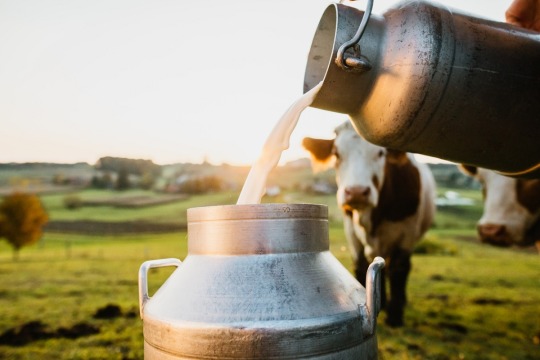
Kisan App
"Currently, India accounts for 24 per cent or one fourth of the total world milk production. This contributes to 4-5 per cent of our GDP. Our plan is to increase the share globally to 30 per cent or one third of world milk production by 2030", Mr Shah said.
Krishi gtyan
To achieve the said goal, the essential thing to do is to increase the productivity of the animals. Globally, India is the largest dairy producer. However, animal productivity in the country is much less than in developed countries.
In this context, taking care of the breeding, health and nutrition of dairy-producing animals is essential. From the Chairman's words, we can now conclude that the Government of India and NDDB are working hand in hand to fulfil this mission.
The previous record of the country says that indigenous milk production has been growing by 6% per year. This growth has been constant for the last five years or so. Compared to the national growth rate, the global production is much less. While the former maintained the standard growth, the latter has been growing by 2% per annum.
NDDB and the Assam state government are working together for the betterment and overall growth of the dairy industry. Mr Shah has mentioned that the ultimate aim is to bring more farmers under this joint venture. This will result in the progress of the dairy sector of the nation. Mr Meenesh Shah, the chairman of West Assam Milk Producers Cooperative Society (WAMUL), said that the production rate of the organization is going to increase. Purabi, the popular brand operated by WAMUL, is also increasing its capacity with the inauguration of another dairy plant. Additionally, it has been known that NDDB is working efficiently to use solar energy and other renewable energy sources.
#agriculture#farming#agriculturenews#india#farminglife#farmer#youtube#indianfarmers#agriculturenewsnetwork
0 notes
Text
Government Imposes 20% Tax on Parboiled Rice for an Uncertain Period.
The government of India has decided to add an extra 20% export tax on parboiled rice exports from the 31st of March onwards. India, the biggest exporter of parboiled rice globally, might continue charging a tax on this type of rice to help control food prices before the Lok Sabha elections. This could make it harder for other countries to get enough rice and could make prices go even higher.
Krishi Kisan app
Prime Minister Narendra Modi, who wants to be elected for a third time in the upcoming elections, is thinking about keeping the tax on exports at 20%. They're not planning to stop exporting parboiled rice altogether.

Earlier in August 2023, the government had imposed a 20% export tax on the same. The tax was supposed to end on March 31st, but now they might extend it. With the latest order increased export tax will resume without an end date. This move is made to hold on to enough local stock for the hassle-free supply of domestic usage.
Krishi Yantra
Apart from the tax on rice export, the tax-free import of yellow peas has also been sanctioned. Moreover, it is extended past 31st March. The order is subject to the condition that the bill of landing should be on or before 30th April 2024.
It is positive to see India's retail inflation easing to 5.10 per cent annually, especially after reaching a four-month high of 5.69 per cent in December. Data from the Ministry of Statistics and Programme Implementation has revealed so. In the past month, all kinds of rice saw a 10% decrease rate within the surging supply in the market. With the help of government policies, the staple food grain was made more accessible for the Indian Households.
The government has put a tax on exporting all types of non-basmati rice until October 16, 2023. They've also limited the export of non-basmati white rice. About a quarter of all rice exported from India is this type. Last year, India made around $4.8 billion selling basmati rice, about 45.6 lakh tonnes of it, to be precise.
The Finance Minister said in her budget speech that the government's actions have helped control rising prices, especially for things that have short shelf life. From April to December last year, the prices of regular commodities went up less than before. Now, the prices are steady and not going up too fast.
youtube
#agriculture#agriculturenews#farmer#farminglife#india#agriculturenewsnetwork#newstoday#agriculturenewstoday#Youtube
0 notes
Text
Farmers’ Protests: Understanding the Swaminathan Committee's recommendations for farmers
The country faces an upside-down situation with the recent farmer's protests. This has been going on for days regarding different issues. One of the needs that has been constant since 2010 is the execution of the Swaminathan Committee's report.

From Punjab to Tamil Nadu, Maharashtra to Madhya Pradesh, farmers have been asking for these recommendations to be put into action.
Krishi Gtyan
In the capital city, there is a heavy presence of protesting farmers calling for guarantees on Minimum Support Price (MSP), the enactment of the Swaminathan Committee report, changes to the Electricity Amendment Bill, and debt relief.
Krishi Vyapari
The BJP-led central government explains they need to take their time to consult everyone before making a law to ensure MSP for crops. Meanwhile, Rahul Gandhi, from the Congress party, reassures farmers that if his party wins, they'll ensure every farmer gets legal protection for MSP, following the Swaminathan Commission's recommendations. In 2019, after withdrawing the controversial farm laws, the Narendra Modi government acknowledged 200 out of 201 proposals from the Swaminathan Commission, including the MSP demand.
What is the Swaminathan Commission all about?
The late Mr MS Swaminathan, a well-known agricultural expert and recipient of the Bharat Ratna award, chaired the National Commission on Farmers. This commission issued a total of five reports between December 2004 and 2006.
The then government in 2007 sanctioned the National Policy of Farmers, based on the draft.
The plan involved improving things like land and other resources and providing farmers with good seeds timely. It also included giving them enough money from banks and confirming farmers come under the national safety plan. The commission ensured fair pricing of crops, among other things.
More insights of the commission's report:
Farmers protesting wanted a promise that crop prices would be fair, following the Swaminathan Commission's idea of the 'C2+50% formula.' This means the government should set prices at least 50% higher than what it costs farmers to grow crops. It includes things like the cost of land and capital ensuring that farmers get enough money. They also wanted the three farm laws cancelled: about trading crops, agreements on prices, and about controlling essential goods.
The panel found that problems like lack of land reforms, water issues, and farmers feeling exhausted by outdated technology were causing them to take their lives. Miserable weather conditions also made things worse. The panel wanted farming to be under both state and central government control to help. They also said corporates shouldn't take over farmland for things other than farming. They suggested rules for selling farmland too.
The commission said farmers should have fair and steady access to water for their fields. They also suggested investing more money seeing that there's enough water for farming, but this plan isn't used anymore.
To increase the productivity of Indian agriculture a group suggested putting more money into things like farm buildings and roads. They also said farmers should take better care of the land by not disturbing it too much. The practice helps the soil stay healthy.
They also talked about giving farmers easier ways to borrow money. They said the government should help make loans cheaper. They thought about Kisan Credit Cards for lady farmers so they could get loans too.
The group suggested making a special fund to help make insurance better for people living in the countryside. This fund would help pay for things to make insurance easier for them.
youtube
#agriculturenews#agriculture#farmer#farminglife#agriculturenewstoday#india#youtube#farming#crop#farmingnews#Youtube
0 notes
Text
The wholesale TUR prices experienced an upward shift of 5 percent in one month.
Wholesale prices of tur dal have risen 5% in the past one month despite new crops percolating and continued imports from Myanmar owing to reduced acreage coupled with production falling for second successive year thereby putting pressure on supply, potentates noted after convening.
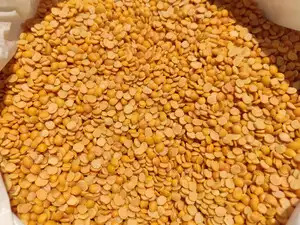
The freight on board prices of tur/arhar which had peaked at ₹200 per kg in Indian rupee terms, during the month of December showed a decline between five to ten percent as control measures for pricing were initiated through opening import window with yellow peas to price controlling mechanism by government monitoring stock limit issue and subsidised Bharat chana.
On the other hand, this also brought about major decrease in prices of entire raw unprocessed variety of tur beans during a period when harvesting kharif crop was just initiated and that farmers refused to sell their harvests and cut short supply penetration toward customers according to industry specialists. With the prices falling to their lowest levels there were indications that tur was in short supply, thus far farmers started waiting for rebound of its price,” said Latur based dal miller Nitin Kalantry. The tur prices, that have slowed down in the middle of August when it slipped as low as to ₹85/kg from its high-flying figure at around Rs.120 pe kg also appears again on an upward trending path now.(How To Promote Clean Diet With Cement Inc Biodegradable Solutions)
The industry body Indian Pulses and Grains Association (IPGA) notes that tur prices have increased for four consecutive weeks as import purchases steadily rev up owing to heightened purchase of the wholecurs by dal millers aimed at processing into dals.
India has been fulfilling its domestic needs of tur dal stocks using imports both from Myanmar and African countries since the super cyclone disaster. It is becoming so more complex that the supplies from Africa are experiencing a siege blockade by their local government while those of Myanmar which have also lower than expected, this too has echoed among industry insiders.
#agriculture#agriculturenews#farmer#farming#farminglife#cotton#tractor#india#agriculturenewsnetwork#comedy
0 notes
Text
The wholesale TUR prices experienced an upward shift of 5 percent in one month.
Wholesale prices of tur dal have risen 5% in the past one month despite new crops percolating and continued imports from Myanmar owing to reduced acreage coupled with production falling for second successive year thereby putting pressure on supply, potentates noted after convening.

The freight on board prices of tur/arhar which had peaked at ₹200 per kg in Indian rupee terms, during the month of December showed a decline between five to ten percent as control measures for pricing were initiated through opening import window with yellow peas to price controlling mechanism by government monitoring stock limit issue and subsidised Bharat chana.
On the other hand, this also brought about major decrease in prices of entire raw unprocessed variety of tur beans during a period when harvesting kharif crop was just initiated and that farmers refused to sell their harvests and cut short supply penetration toward customers according to industry specialists. With the prices falling to their lowest levels there were indications that tur was in short supply, thus far farmers started waiting for rebound of its price,” said Latur based dal miller Nitin Kalantry. The tur prices, that have slowed down in the middle of August when it slipped as low as to ₹85/kg from its high-flying figure at around Rs.120 pe kg also appears again on an upward trending path now.(How To Promote Clean Diet With Cement Inc Biodegradable Solutions)
The industry body Indian Pulses and Grains Association (IPGA) notes that tur prices have increased for four consecutive weeks as import purchases steadily rev up owing to heightened purchase of the wholecurs by dal millers aimed at processing into dals.
India has been fulfilling its domestic needs of tur dal stocks using imports both from Myanmar and African countries since the super cyclone disaster. It is becoming so more complex that the supplies from Africa are experiencing a siege blockade by their local government while those of Myanmar which have also lower than expected, this too has echoed among industry insiders.
#agriculture#agriculturenews#farmer#farming#farminglife#agriculturenewsnetwork#crop#india#agriculturenewstoday
0 notes
Text
Horticulture production in 2022-23 is estimated to be 2.32% higher: Third Advance Estimate
The total horticulture production in the year 2022-23 is projected to be 2.32% up over the previous year due to higher output of fruits and vegetables, as per the Third Advance Estimate of 2021-22
Kisan App
However, though the production of vegetables is estimated to be 213.88 million tonnes in 2022-23, more than 209.14 million tonnes last year due to an increase in potato and tomato ,There is no data on onion output.
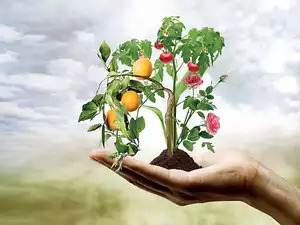
Krishi App
In some of the major producing regions in Maharashtra and Karnataka, rabi (winter) onion sowing has declined by 20% till the first week of January due to erratic rainfall patter – lower reservoir levels hampering irrigation activities.
The production of potatoes is forecasted to be 60.22 million tonnes, and in the year 2021-22, the production was estimated at 56.18 million tonnes.
The tomato production is forecast to be 20.37 million tonnes in the year 2022-23 as compared to 20.69 million tonnes in the fiscal year of 201-15.
It is estimated that production of fruits will increase from 107.51 million tonnes in the year ending 2021-22 to 109.53 million tonnes in the year ending 2022-23.
The horticulture production in the year 2022-23 is projected to stand at a figure of 355.25 million tonnes which is roughly about 8.07 million tonnes more than what was reported during the year 2021-
The acreage under horticulture crops is projected to rise slightly from last year’s 28.04 million hectares, to 28.34 million hectares
youtube
#agriculture#agriculturenews#farmer#farminglife#agriculturenewsnetwork#india#crop#agriculturenewstoday#youtube#Youtube
0 notes
Text
India has no plans to import wheat for now: Piyush Goyal

India is not going to import wheat and its farmers are expected to reap a record crop to create a surplus of wheat stocks in the world’s second-largest producer of this grain, the trade minister said on Saturday.
According to ground reports, the crop is quite good this year and the output is likely to reach a record of 114 million metric tons, Piyush Goyal said in a briefing to reporters.
Kisan App
Last year, India outlawed wheat exports only to revive them in recent months following Moscow’s invasion of Ukraine that caused an increase in global prices.
Krishi App
The government has offloaded an estimated 6 million metric tons of wheat to local bulk buyers since June. 1, After the Food Corporation of India began selling the grain out of its warehouses.
Even at the cost of selling wheat from its granaries for April 1, when the new marketing year starts, inventories are likely to be above the target of 7.46 million metric tons at state warehouses as well as declared by the government official earlier this month.
The level of wheat stocks in state warehouses amounted to 16.47 million metric tons as of January 1, the lowest since 2017.
However, Goyal announced that for the present period, India will maintain its export restrictions on wheat, rice and sugar.
He said, “We will work to safeguard the interests of consumers and farmers.”
India, which is also the second-largest rice producer in the world, banned exports of non-basmati white rice abroad last year. Thus, New Delhi has also stopped mills from exporting sugar in 2013.
Goyal also told that his government has no immediate plans to allow duty-free imports of corn – also known as maize in India – rejecting the requirement of the poultry industry.
#agriculture#agriculturenews#farmer#farminglife#agriculturenewsnetwork#india#crop#agriculturenewstoday
0 notes
Text
Govt predicts the masur production may even reach the record 1.6 million tons this rabi season
Mahur lentil production in the country is projected to hit an all-time high of 1.6 million tonnes in the 2023-24 rabi season on higher acreage, said Consumer Affairs Secretary Rohit Kumar Singh During the 2022-23 rabi season, Masur production was estimated at 1.55 million tonnes by official estimates.

Even though India is the world leader in the production and consumption of pulses, some pulses such as masur and tur are imported into the country to balance domestic deficits.
This year will be a record year for masur production. We will produce the highest volume of masur in the world. The acreage has increased. This dynamic is changing,” said Singh at a GPC-hosted event on Friday.
Kisan App
As for the rabi season the current year, the area under the masur crop grows larger. According to the available figures of the agriculture ministry, total masur acreage has so far increased to 1.94 million hectare in the ongoing rabi season from 1.83 million hectare of the same period last year.
Krishi App
During the sidelines of the event, the Secretary commented that masur production is estimated to be 1.6 million tonnes for the current rabi season.
He also added that the nation has, on average, 26-27 million tonnes of pulses every year. In case of chana and moong , the country is self reliant but for other pulses such as tur and masur we still import to cope with the deficit.
Even as we campaign for self-sufficiency in pulses, we cannot deny that for some time to come, we should probably keep imports of (pulses) running.
youtube
#agriculture#farming#agriculturenews#farmer#farminglife#agriculturenewsnetwork#crop#india#chana#moong#masur#Youtube
0 notes
Text
Nafed feels the pulse, gets pvt retailers to sell subsidised grains.
For the first time, foodgrain in consumer packs had been made available to consumers through the private retail channels subsidised by the government. The pilot of selling subsidised pulses under the Bharat Dal brand through Reliance Retail and Big Basket was started by the government agency Nafed. This was revealed by Nafed officials who refused to be named, “We have plans to soon start selling Bharat Atta through the private retail channels”.
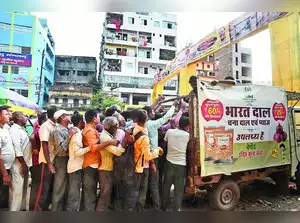
Kisan App
Since end-October, Reliance has began selling Bharat Dal and its response has been getting better and better. As per industry sources , Bharat Dal sells at about 50% of the chana dal sales at some of the Reliance stores. The email sent by ET remained unanswered by Reliance.
Krishi App
The supply of Bharat chana dal is more in north and west India from where Nafed picks the Bharat dal processed. Sources said to ET that the quality of Bharat dal and the private label dal is more or less the same because both get chana from Nafed, the only agency in India which has stocks of chana. Bharat chana dal is less expensive than the low priced dal sold by these retailers by over 40%.
#agriculture#agriculturenews#farmer#farminglife#india#crop#farming#agriculturenewstoday#newsupdate#newstoday
0 notes
Text
Main producing regions record a reduction of 10-15% in Rabi onion sowing
The sowing of the rabi onions has dropped by 20% to 25% until the 1 st week of January in some of the main producing regions located in Maharashtra and Karnataka.

Kisan App
Industry experts opined that although there are a few days remaining before sowing window finally shut, it may possibly drop by 10-15% the acres of onion this season.
Some of them said this could lead food inflation to much higher levels around March-April just before the Lok Sabha polls when the government will be under pressure to avoid inflation.
Krishi App
They may partially recover the present levels of planting, but in the end of the season, the area under cultivation of rabi onion may shrink by 10 percent, according to Pushan Sharma, director research at Crisil Market Intelligence and Analytics.
0.6 percentage points out of total inflation and 10 out of the basket of vegetables belong to onions.
70% of total onions produced in the country is in the rabi season. This season’s onions have a longer shelf life of about 5-7 months and have the greater responsibility of ensuring a supply-demand balance in addition to feeding the population from March to September.
2 Major states of onion creation, Maharashtra and Karnataka both have insanely low reservoir levels, which have undermined irrigation perspectives leading them to shift away from rabi onion which demands approximately 12-15 irrigations, states the Indian Council of Agricultural Research (ICAR).
youtube
#agriculture#farming#agriculturenews#agriculturenewstoday#india#farmer#indianfarmers#newslive#Youtube
0 notes
Text
Going bananas: By October, prices rise to ₹30/kg from ₹18-20.
Banana prices gone bananas after being hit by falling cultivation in major producing and disease in such areas.

Krishi App
According to consumer inflation data revealed last month, banana inflation rose to 16.5% in November up from 2.2% four months ago. Traders noted that retail prices are standing somewhere between ₹30 per kg now from ₹18-20 in October.
Banana Growers Association president BV Patil The unsuitable weather conditions this year caused multiple disease attacks on production.
Kisan App
Experts believe that banana prices are likely to appreciate further. Trader added, the modal price – the most common price at which a product is sold in a market – of bananas in Azadpur Mandi of Delhi, one of the largest fruit and vegetable markets, on January 6 was ₹2,900 per quintal against ₹1,800 per quintal in October Experts note that it could also overthrow inflation
mathematics. Paras Jasrai, senior analyst, Ind-Ra said, “Fruits inflation was about 11% in November Supply side pressures could sustain high inflation on fruits in the short term. 35.36 MT of bananas per year is produced in India, and only 1% is exported to other countries in FY23.
Traders and growers warned that in some areas production has suffered 15-30% because of rainfall at the wrong time of the year and disease outbreaks, with prices being effected. A trader and exporter of fruits along with bananas, Bhavesh Karara said, “Production of bananas this year has been hampered by unpredictable weather conditions and prevailing diseases in the major states that produce these fruits”. The cucumber mosaic virus has been one of the factors affecting several banana-growing districts in Maharashtra, one of which is Jalgaon. The situation has been further emphasised by unseasonal rains that occurred in September. In Bihar, another major producer of the fruit, farmers have diversified from bananas to maize as well since the demand for poultry feed and ethanol has escalated, thereby making the production of maize economical to them. Further research indicates that banana exports have increased almost threefold in the past four years alone. These Middle Eastern countries have been the biggest buyers of Indian bananas representing over three-fourths of the total trade. However, exports are also finding new markets.
0 notes
Text
Indian agricultural exports to boom despite restrictions on wheat, rice, sugar.
To diversify the shipments, India’s trade minister said on Monday that the country’s agricultural exports will jump in fiscal 2023/24 despite restrictions imposed on wheat, rice and sugar despite that.
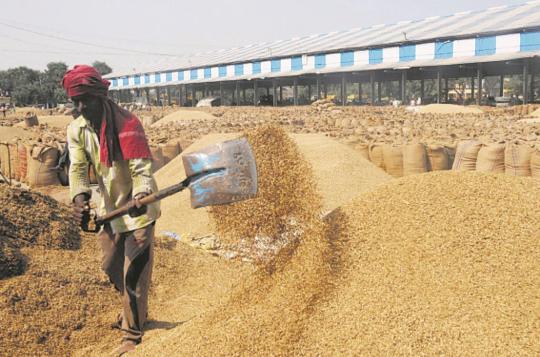
India, the world’s second largest producer of wheat, rice and sugar, imposed a ban on exports of these commodities last year in an attempt to minimize soaring domestic prices.
kisan App
These restrictions may lead to the shortage of $4 billion to $5 billion this year as Reuters reported last month.
krishi App
Trade minister Piyush Goyal said in his address to a conference in New Delhi, “We had agri exports in the aggregate of about $53 billion in 2022/23, and we expect the number to increase in the current year despite the restrictions placed on the export of rice, wheat or sugar.
State-run trade body APEDA data revealed that exports of meat and dairy, cereal preparations, and fruits and vegetables increased between April and November this year.
#agriculture#farming#agriculturenews#farminglife#farmer#crop#agriculturenewstoday#india#agriculturenewsnetwork
0 notes
Text
Govt Launches portal to help farmers to make India self sufficient in pulses.

In order to make India self sufficient in pulses, the government has launched a new portal which will allow the National Agricultural Cooperative Marketing Federation of India ( Nafed ) and the National Cooperative Consumers’ Federation of India ( NCCF ) to buy tur dal ( pigeon pea ) directly from registered farmers. Union Home and Cooperation Minister Amit Shah launched the portal. It will help in registration, buying and direct payments to growers of Tur Dal.
Kisan App
Piling the pressure on, Shah accented that by January 2028 will be a time when India will cease to import pulses altogether. Through the portal, he assured farmers that he would procure their produce at either the MSP or market price, whichever were higher.
Krishi App
Participating farmers will also have an opportunity to sell their produce in the open market. The aim of this initiative is to strengthen domestic production of pulses by promoting diversification of crops and as a result, decrease dependence on imports. A similar facility will be rolled out to other pulses like urad (or black gram), masoor (or red lentil), and maize. Currently, tur, urad, and masoor are largely imported by India.
Through this new portal, government-supported cooperatives like NAFED and NCCF will buy pulses. Associated companies with NCCF such as Agribid will also help in acquiring of various commodities.
Shah highlighted that this shift would not only provide India with independence in pulse production, but it would also result in nutritional security, proper nutrients in the soil through nitrogen fixation, and in saving water as the crops need less water.
In the respective period, tur production in India is predicted at 3.4 million tonnes when the tur output in 2016-17, the record year reported at 4.8 million tonnes, happened due to reduced acreage. This initiative is estimated to reduce India’s import of pulses in the current fiscal year by more than 35 percent than the previous fiscal year, according to the government.
0 notes
Text
India's wheat production might reach a new high of 114 million tonnes in the year 2023-24.
The food ministry official said that wheat production is predicted to reach a new high of 114 million tonnes during the current 2023-24 crop year. This is because more land is being used for growing wheat and as long as the weather stays normal, it looks very promising. The last part of planting wheat, the main winter crop, is happening right now and will go on for another week. Until a week ago, wheat was grown in 320.54 million hectares, according to the information given.
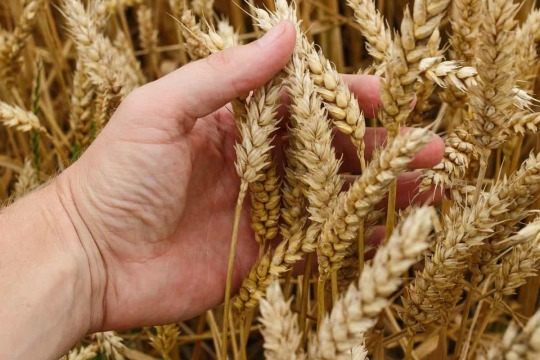
In the 2022-23 crop year (July-June), wheat production reached 110.55 million tonnes. This is more than the 107.7 million tonnes produced in the year before.
Kisan App
The person in charge at Food Corporation of India (FCI) said they think there will be more land used for growing wheat this year. If the weather is good, there could be 114 million tonnes of production. This information was given informally by the agriculture ministry.
Krishi App
The amount of land used for wheat farming has also gone up compared to last year. Some states had a one percent shortage, but that will also be fixed in the first week of January, he said.
"If we make that much product, we're certain we can get more than we need and extra supplies for next year's Open Market Sale Scheme (OMSS)." He emphasized this.
When asked if the central nodal agency plans to step up procurement considering the opening wheat balance of 76 lakh tonnes to be on April 1, which is just enough to meet the buffer requirement, the FCI chief said: We'll put in a lot of effort to provide cheaper costs and assist all farmers. The open market sale shows that prices are not going up more than last year and they are staying steady.
"Since the cost of wheat MSP is 7% higher than last year, we hope many farmers will want to give their harvest to FCI." Meena said.
Last year, FCI bought 26.2 million tonnes of wheat. This was more than the yearly need of 18.4 million tonnes.
This year's wheat harvest will start in April.
FCI is the main center that buys rice and wheat to make sure farmers get MSP. It then gives it out for free to 81 crore poor people through ration shops. It also uses extra grain via OMSS to increase how much food is available and control costs.
#agriculture#farming#farmer#agriculturenews#india#agriculturenewsnetwork#agriculturenewstoday#wheat#farminglife#crop
0 notes
Text
India tells US about sending 8,606 tons of raw cane sugar. This is under the TRQ rules.
On Wednesday, the government said they are sending 8,606 tons of raw sugar to the US as part of the TRQ (tariff-rate quota) plan for the money year 2024. Shipments under the TRQ pay less customs fees. When the limit is hit, more costly tax is used on extra imports.
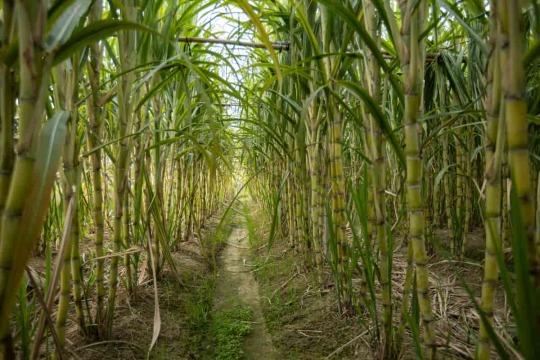
The DGFT announced that 8,606 MTRV of raw cane sugar will be sent to the USA under the TRQ plan from October 1, 2023 to September 30, 2024.
Kisan App
India, the world's second-biggest maker and biggest user of sugar, also has a special agreement for sugar export with the European Union. The DGFT said that the quota will be handled by the Agriculture and Processed Food Products Export Development Authority (APEDA).
Krishi App
In July 2023, the United States Trade Representative (USTR) declared how much sugar can be imported from India and other countries. This was first come, first served for the fiscal year 2024 (October 1, 2023 to September 30, 2024). This covered raw cane sugar, refined sugar TRQs let countries send a certain amount of a product to US with a lower tax rate. But, if they send more than a fixed limit, they have to pay a higher tax rate for all imports of that product
0 notes